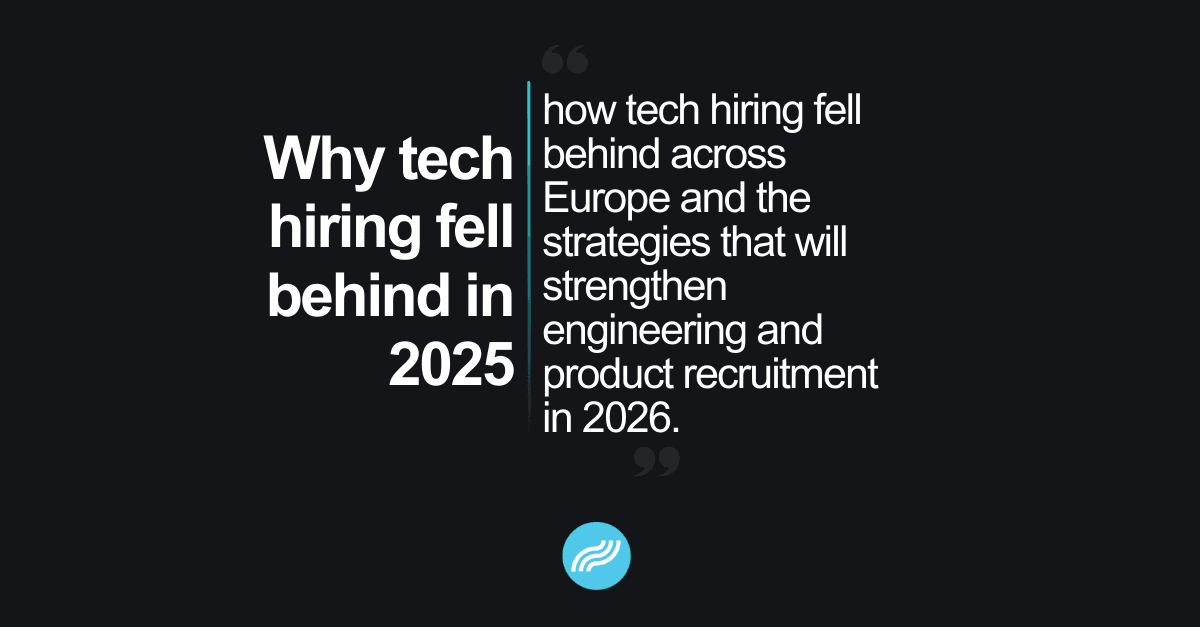Oct 20, 2025
The Internal Parity Problem: The hidden blocker to great hiring
A Quiet but costly barrier
One of the biggest blockers to hiring great people right now isn’t budget, it’s internal parity.
We’re seeing it across every market: new candidates commanding 15–25% higher salaries than loyal team members who’ve been in the business for years.
Suddenly, hiring leaders are trapped between two uncomfortable choices:
1️⃣ Pay the market rate — and risk upsetting existing employees who feel left behind.
2️⃣ Stay within internal pay bands — and watch top candidates walk away.
Neither feels right. And in reality, both come with a cost.
When we asked our Director, Scott, what he thought the biggest hiring challenge was right now, his answer was immediate:
“It’s internal parity. The market’s moved so fast that many pay frameworks just haven’t caught up, and it’s quietly holding companies back.”
The market has moved faster than salary frameworks
In sectors like AI, data, product, and engineering, salaries have outpaced most internal progression frameworks.
A senior engineer salary in 2021 might now align with a mid-level candidate in 2025. Those who joined during the pandemic often entered at lower bands and while markets have surged, internal frameworks haven’t always caught up.
That creates a lag effect: new hires are priced to the current market, while internal talent is still anchored to last year’s rates.
The result?
Hiring velocity drops, as offers are slowed down or renegotiated.
Morale dips, as loyal employees notice disparities.
Retention weakens, because the best people know their market value.
How leaders are responding
Forward-thinking companies aren’t ignoring this, they’re adapting, and we’re seeing a few consistent behaviours among the teams handling this best:
💡 1. Regular market benchmarking (every 6–9 months)
Not annually, because tech and digital markets don’t move on annual cycles anymore. The smartest organisations use real-time market data from their partners (like Tides) to keep benchmarks relevant and competitive.
💬 2. Transparent communication
Internal parity isn’t just a financial issue, it’s a trust issue. Teams handle tough conversations far better when they understand the rationale behind pay decisions. Being open about how salary bands are reviewed, and how exceptions are managed, builds long-term confidence.
⚖️ 3. Flexibility for business-critical hires
When the perfect AI or data hire appears, delaying or restricting an offer for the sake of parity can be more damaging than flexing. The key is to communicate that exception, and ensure any internal misalignment is reviewed quickly after.
📈 4. Linking pay progression to value creation
The most progressive companies are rebalancing internal pay using performance-led frameworks. They’re giving loyal talent clear pathways to catch up to new market levels, not as a reward for tenure, but for impact.
Why internal parity matters more than ever
In the post-AI hiring landscape, the competition for high-impact digital talent is relentless.
When your internal frameworks lag behind the market, your brand reputation takes a hit, both internally and externally.
Internally, teams start to question fairness. Externally, candidates sense hesitation. In both cases, your employer brand loses credibility.
What’s worse is the hidden cost: delays in hiring, lost productivity, and the cultural drag of inequity all quietly erode performance.
The real opportunity for change
Internal parity isn’t just a compensation issue, it’s a strategic opportunity.
Companies that manage this proactively tend to see three things happen fast:
Faster hiring cycles, because decisions aren’t stalled by pay debates.
Improved retention, because fairness is felt, not just stated.
Stronger brand trust, both inside and outside the organisation.
It’s not about paying over the odds, it’s about recognising reality. Markets move fast, especially in AI, engineering, and digital transformation. The frameworks that supported growth in 2021 might be holding you back in 2025.
A final thought from Scott
Internal parity isn’t a reason to slow down hiring. It’s a reason to evolve your approach to compensation, progression, and transparency.
Your people notice when you do. So do your candidates.
At Tides Digital, we work with talent leaders across Europe to benchmark markets, map pay trends, and build flexible frameworks that keep pace with the industries we serve.
Because in a market that moves this quickly, standing still isn’t sustainable.
Articles




